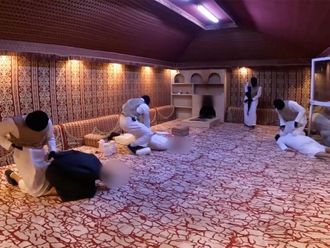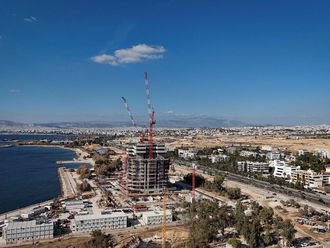London: The owner of Grenfell Tower placed its fire safety policy under review last year and ordered multiple changes to the way it handled fire risk in its properties, including speeding up the installation of self-closing doors, tackling hoarding and dealing with clutter in communal areas that posed a fire risk.
The review of fire safety policy by the Kensington and Chelsea Tenants Management Organisation (KCTMO) was under way at the same time as residents in the Grenfell Action Group warned about “dangerous living conditions” in November and said: “it is a truly terrifying thought but the Grenfell Action Group firmly believe that only a catastrophic event will expose the ineptitude and incompetence of our landlord, the KCTMO.”
It said in a blog post: “It is our conviction that a serious fire in a tower block or similar high density residential property is the most likely reason that those who wield power at the KCTMO will be found out”.
KCTMO was handed a “deficiency notice” last year by the London fire brigade after it audited another of its properties — Lonsdale House on the Portobello Court Estate. It related to flat entrance doors and the requirement for KCTMO to regularly inspect of self-closing devices. According to board papers for November 2016 seen by the Guardian, KCTMO, which owns and manages several tower blocks in the area, admitted it needed to adopt “a more proactive approach to the installation of self-closing devices to flat entrance doors across the stock”, said it would increase the frequency of the comprehensive fire risk assessment reviews, install fire action notices in the entrance lobbies of all blocks and undertake “further work to address the issue of storage and charging of mobility scooters within communal areas”.
It said the TMO needed “a more coordinated approach with the various agencies involved with hoarders — adopt a clear procedure involving an assessment by our fire consultant”, as well as “clarity on the requirements of a communal storage ‘managed use’ policy — what is and what is not acceptable”.
The block underwent a £10.3 million (Dh48.4 million) renovation that was completed in May 2016. In January that year, Grenfell Action Group raised concern about the single emergency exit to the building in 2016, warning that if that exit were to become blocked in a fire, people would be trapped inside.
Renovations also included the addition of insulated exterior cladding and double-glazed windows to the reinforced concrete building, as well as a communal heating system.
The building works were criticised by the Grenfell Action Group, which said the installation of new water heaters in the hallways of many of the flats made the already tight access even more cramped.
The 1970s building was clad with a system of polyester powder-coated aluminium rain-screen panels, many of which appeared to be burning strongly during the blaze. It was installed at a cost of £2.6 million by specialist facades contractor Harley Facades Limited.
A spokesman for Harley referred calls to the main contractor, Rydon, but said: “It is devastating what has happened. It is absolutely awful. Until we have more information ourselves we can’t comment.”
The architect was Studio E. A spokeswoman said: “We are devastated about what has happened,” but declined to comment further. The tower block is located in the Lancaster West estate in north Kensington, on the other side of Kensington Aldridge academy to Lancaster Road. The building includes Dale Youth Boxing Club, home of top ranged super-middleweight boxer James DeGale, who won a gold medal for Britain in the 2008 Olympics. It has 120 apartments, all of which are occupied. More than 200 people were believed to have been living in the building when it caught fire just before 1am on Wednesday morning.
The completion of the refurbishment project last year was a matter of considerable pride for the leader of the Royal Borough of Kensington and Chelsea, Nick Paget-Brown. He wrote to Peter Maddison, director of assets and regeneration at the tenant management organisation, describing it as “a huge improvement on the previous environment and will make an enormous difference to the lives of people living there. The new entrance, club room, nursery and enhanced boxing club are tremendous.”
According to KCTMO board papers, fire risk had been a live issue during the refurbishment. KCTMO said that during the Grenfell regeneration project there had been “close liaison with London fire brigade (LFB) and fire risk assessor” and that “at the conclusion of the work some of the operational firefighters from the local fire station attended an on-site briefing where the contractor demonstrated the fire safety features of the building”. “There is ongoing work with LFB to ensure remaining high-rise blocks are prioritised for familiarisation visits and where possible home fire safety visits are offered,” the board papers said.
“We have provided a range of ongoing publicity to residents, particularly in relation to the ‘stay put’ fire strategy and procedures residents should follow in event of a fire in their flat or elsewhere in their block, and informing leaseholders about the fire safety standards required of their flat entrance doors [existing and any planned replacement]. Further progress has been made with the installation programme of hard-wired automatic smoke alarms in tenanted dwellings.”











